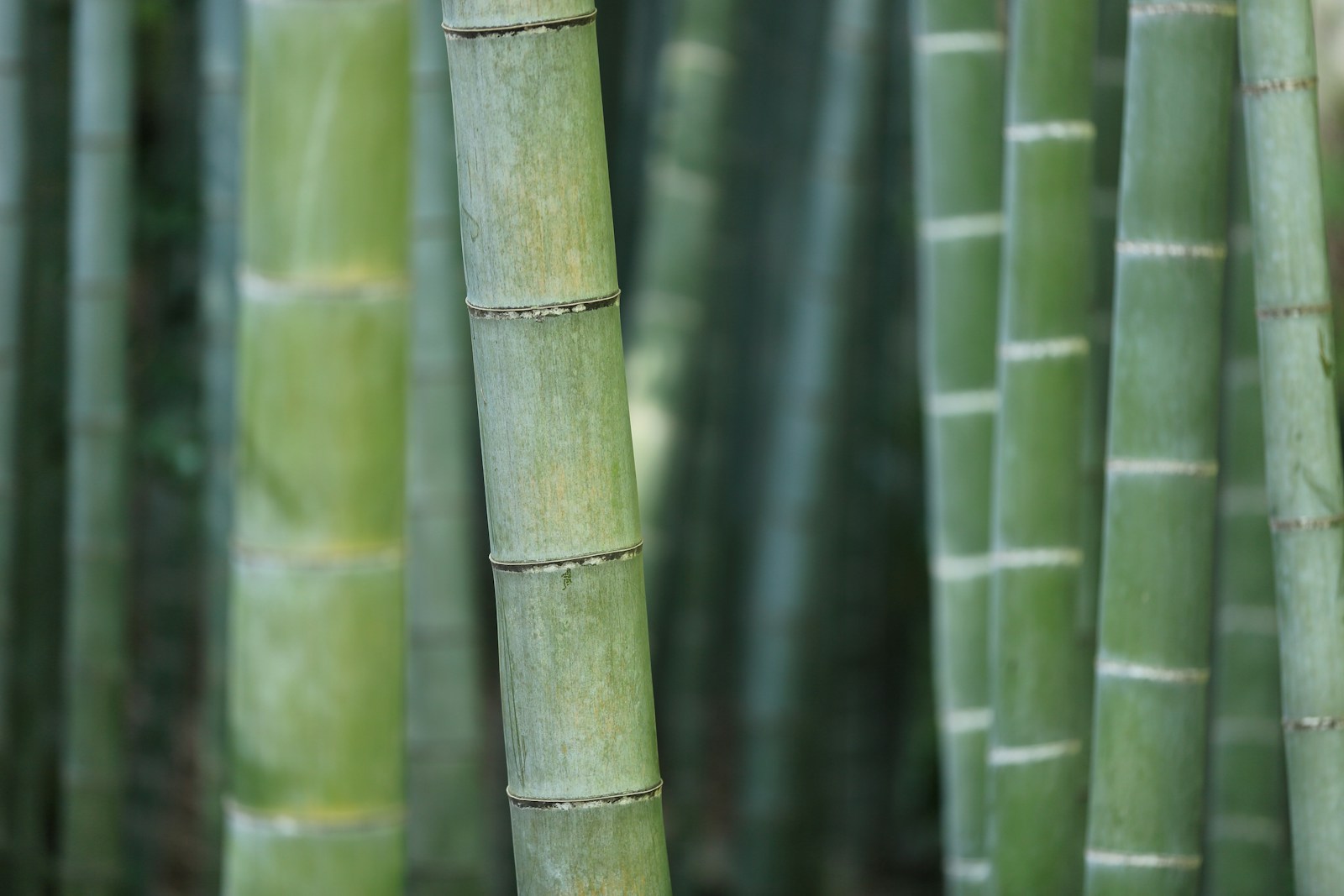Bamboo plants, known for their rapid growth and resilience, can quickly take over your garden if left unchecked. These hardy plants might seem like an exotic addition at first, but they can become a gardener’s nightmare if they spread beyond their designated area. To effectively eliminate invasive bamboo, start by digging up the rhizomes, which are the underground stems responsible for the plant’s spread. Use a sharp spade to carefully dig around the bamboo clump, making sure to remove as much of the rhizome network as possible. This effort may require some elbow grease and patience, especially if the bamboo has been established for a while. Understanding Bamboo Growth is essential before diving deeper into removal techniques. Bamboo spreads through rhizomes, which are underground stems that can shoot up new stalks several feet away from the original plant. There are two main types of bamboo: running and clumping. Running bamboo, like Phyllostachys, is notorious for its aggressive spreading, while clumping bamboo, like Bambusa, remains more contained but can still grow larger than desired over time.
Manual Removal Techniques
Digging Up Rhizomes
Manual removal is often the first step in dealing with bamboo. Here’s a step-by-step guide:
- Soak the Soil: Water the bamboo area thoroughly a day or two before you start digging. Moist soil is easier to work with and less likely to damage surrounding plants.
- Identify the Rhizomes: Begin by locating the main culms (stalks) and follow them to the ground. Rhizomes typically radiate from these points.
- Dig a Trench: Use a sharp spade or shovel to cut a trench around the bamboo patch. This will help isolate the rhizomes.
- Remove Rhizomes: Carefully dig under the rhizomes and pull them out. Be prepared to dig deep, as rhizomes can extend several feet underground.
- Dispose Properly: Do not compost the removed rhizomes, as they can still grow. Instead, dispose of them in a green waste bin or burn them if local regulations allow.
Leveraging Tools
Investing in the right tools can make a significant difference. A mattock or a trenching shovel can help break up compacted soil and larger rhizomes. For extensive bamboo invasions, renting a small backhoe or hiring a professional might be necessary.
Chemical Control
If manual removal is not sufficient, consider using herbicides to kill off the remaining bamboo roots. Glyphosate-based herbicides are effective in eradicating bamboo but must be used with caution to prevent harm to other plants.
Using Herbicides Safely
- Select the Right Product: Choose a glyphosate-based herbicide specifically labeled for use on bamboo or woody plants. Avoid broad-spectrum herbicides that can harm your entire garden.
- Apply Correctly: For best results, apply the herbicide directly to freshly cut bamboo stems. Alternatively, a foliar spray can be used for larger infestations, ensuring that the leaves absorb the chemical.
- Follow Instructions: Always follow the manufacturer’s instructions carefully. Wear gloves, goggles, and a mask to protect yourself from chemical exposure.
- Consider Reapplication: It may take several applications to completely kill the bamboo. Monitor the area and reapply as needed.
Root Barrier Installation
To prevent bamboo from spreading further into your garden, install a root barrier around the perimeter of the bamboo patch. Root barriers are typically made of thick plastic or metal and should extend several feet into the ground to prevent rhizome penetration.
Installing a Root Barrier
- Choose Material: Use HDPE (high-density polyethylene) or metal for durability. The barrier should be at least 30 inches deep.
- Dig a Trench: Dig a trench around the bamboo, ensuring it is deep enough for the barrier. The top of the barrier should protrude an inch or two above the soil to prevent rhizomes from crossing over.
- Install and Secure: Place the barrier in the trench, ensuring it overlaps slightly at the ends. Secure it firmly to prevent rhizomes from slipping through gaps.
- Periodic Checks: Regularly inspect the barrier for any signs of rhizome growth and trim off any escaping roots to maintain its effectiveness.
Monitor and Maintenance
Even after successful removal, bamboo can quickly regrow from any remnants left in the soil. Regularly monitor the affected area for any signs of new shoots or growth and promptly remove them to prevent reinfestation.
Long-Term Monitoring
- Weekly Inspections: For the first year, check the area weekly for new shoots. Remove them immediately by cutting them at the base.
- Companion Planting: Consider planting alternative ground cover or plants that can outcompete and suppress bamboo growth. Hardy perennials or aggressive ground covers like mint can help.
- Regular Maintenance Schedule: Implement a routine schedule for checking the area. As bamboo is persistent, consistent effort is required to prevent its return.
Alternative Strategies
Mulching
Using mulch can help suppress bamboo regrowth by blocking sunlight and physically hindering new shoots. Apply a thick layer of organic mulch, like wood chips or straw, over the affected area. This not only prevents bamboo from sprouting but also improves soil health.
Solarization
Solarization involves covering the soil with clear plastic to trap heat and essentially “cook” any remaining bamboo roots. This method is most effective in sunny areas and during the hottest months.
- Moisten the Soil: Water the area thoroughly to help conduct heat.
- Cover with Plastic: Use clear plastic sheeting to cover the area, securing edges with rocks or soil.
- Leave in Place: Allow the plastic to remain for 4-6 weeks to ensure thorough heating.
Professional Help
In cases of severe bamboo infestation, professional intervention might be necessary. Landscape professionals have access to specialized tools and herbicides that are more effective and can save you time and effort.
Choosing a Professional
- Research: Look for professionals with experience in bamboo removal. Check reviews and ask for references.
- Get Estimates: Obtain multiple quotes to compare prices and services. Ensure the estimate includes follow-up visits to address any regrowth.
- Verify Credentials: Ensure the professional is licensed and insured, particularly if they will be using herbicides.
Learning from Mistakes
Many gardeners have learned the hard way about bamboo’s invasive nature. Here are common mistakes and how to avoid them:
- Underestimating Bamboo’s Growth: Always plan for containment when planting bamboo. Use root barriers from the start.
- Ignoring Early Signs: Address bamboo spread at the first sign. Delaying action makes removal more challenging.
- Improper Disposal: Never leave rhizomes or cut stalks where they can regrow. Always dispose of them properly.
Sustainable Alternatives
If you’re looking for the aesthetic appeal of bamboo without the hassle, consider these non-invasive alternatives:
- Switchgrass (Panicum virgatum): Offers a similar vertical presence and is native to many regions.
- Giant Reed (Arundo donax): While also needing management, it’s less invasive than bamboo and provides a similar look.
- Feather Reed Grass (Calamagrostis x acutiflora): Provides height and movement without the invasive tendencies.
Additional Tips and Insights
Seasonal Considerations
- Spring and Summer: These are the best seasons for bamboo removal as the plants are actively growing, making it easier to identify new shoots and rhizomes.
- Fall and Winter: Focus on maintenance and monitoring. The growth slows, but any new shoots should still be promptly removed.
Environmental Impact
- Biodiversity Awareness: While removing bamboo, be mindful of any wildlife that might use the bamboo as habitat. Gradual removal might be necessary to allow wildlife to relocate.
- Soil Health: Post-removal, consider planting nitrogen-fixing plants to restore soil balance. Legumes and clover can improve soil fertility.
Community and Legal Considerations
- Local Regulations: Some areas have specific regulations regarding invasive species removal. Check with local authorities for any guidelines or assistance programs.
- Community Efforts: If bamboo is a widespread issue in your area, consider organizing a community removal day. Collective efforts can make a significant impact and provide shared resources.
Conclusion
Bamboo control requires persistence and a multi-faceted approach. By understanding bamboo’s growth patterns and implementing a combination of manual removal, chemical control, and physical barriers, you can reclaim your garden space. Regular monitoring and maintenance will ensure that bamboo remains a managed part of your landscape, allowing you to enjoy your garden without the worry of a bamboo takeover. With dedication, you can transform your garden from a bamboo battlefield to a serene oasis.




